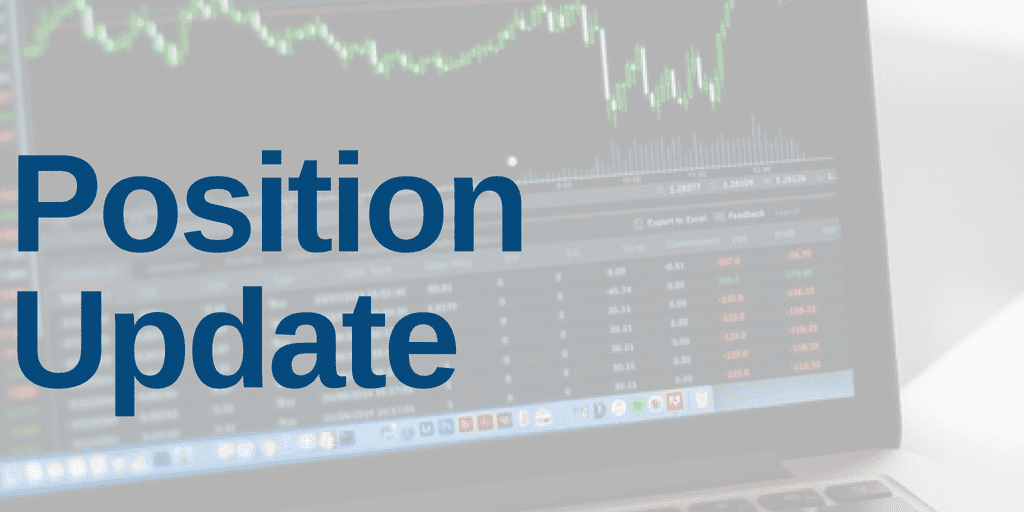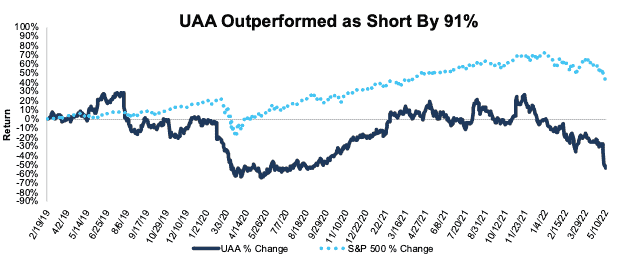Under Armour (UAA) – Closing Short Position – down 50% vs. S&P up 41%
We put Under Armour (UAA: $11/share) in the Danger Zone on February 19, 2019. UAA earned an Unattractive rating at the time of the report. We pointed out that Under Armour’s fast revenue growth did not equate to profits, its return on invested capital (ROIC) was in decline, the business was losing market share, and its stock was significantly overvalued.
This report leverages our cutting-edge Robo-Analyst technology to deliver proven-superior[1] fundamental research and support more cost-effective fulfillment of the fiduciary duty of care.
During the 3+ year holding period, UAA outperformed as a short position, falling 50% compared to a 41% gain for the S&P 500.
Under Armour’s operations have improved from the COVID-19 pandemic lows of 2020. In 2021, Under Armour earned a 14% ROIC, up from 1% the year prior and 5% in 2019. The company’s net operating profit after tax (NOPAT) improved to $467 million, up from $25 million in 2020 and $193 million in 2019. With higher profitability and a lower valuation, Under Armour now earns an Attractive rating.
Given the outperformance as a short, especially after falling 50% year-to-date, UAA no longer offers the same risk/reward. As a result, we’re closing this Danger Zone pick.
Figure 1: UAA vs. S&P 500 – Price Return – Successful Danger Zone Pick
Sources: New Constructs, LLC and company filings
Note: Gain/Decline performance analysis excludes transaction costs and dividends.
This article originally published on May 13, 2022.
Disclosure: David Trainer, Kyle Guske II, and Matt Shuler receive no compensation to write about any specific stock, style, or theme.
Follow us on Twitter, Facebook, LinkedIn, and StockTwits for real-time alerts on all our research.
[1] Our research utilizes our Core Earnings, a more reliable measure of profits, as proven in Core Earnings: New Data & Evidence, written by professors at Harvard Business School (HBS) & MIT Sloan and published in The Journal of Financial Economics."

